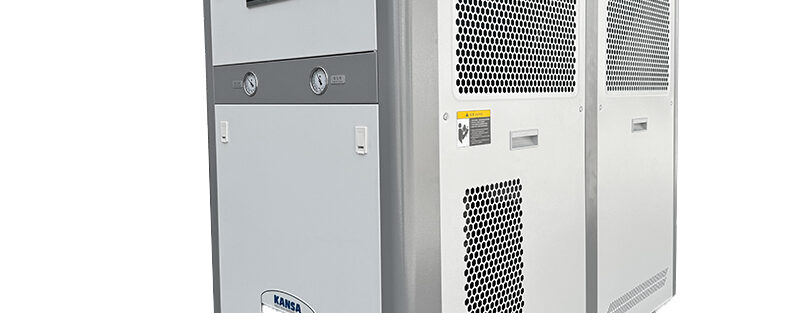Within the evolving landscape of energy storage, the battery manufacturing industry is leading innovation. With the continuous need for electric vehicles, integration of renewables, and mobile electronics, the demand for precise, efficient, and dependable temperature control in the manufacturing process of batteries has never been higher. New energy industrial water chillers are a technology that will meet this need. They are a highly efficient cooling technology designed specifically to meet the particular thermal management needs of the battery space.
Why Temperature Control Is So Critical in Battery Production
Manufacturing batteries is a highly complex process consisting of a series of chemical reactions and sensitive engineering processes such as electrode coating, cell assembly, filling with electrolyte, and aging. All are extremely temperature-sensitive processes. Cell quality problems, energy density loss, reduction in battery life, or safety concerns such as thermal runaway can occur as a result of overheating at any point during the process.
Industrial water chillers bridge that gap. Through their precise and consistent cooling, they maintain materials and equipment at their best operating temperatures. New energy industrial water chiller machinery is engineered specifically to meet the high-performance temperature control requirements of lithium-ion battery production and other high-tech applications.
Role of New Energy Industrial Water Chillers in Battery Plants
New energy industrial water chillers now have some advantages that make them very appropriate in battery plants:
1. Precise Temperature Control
With the new PID controllers and online monitoring, the chillers can maintain the cooling water at ±0.5°C accuracy. It is very necessary for applications such as slurry mixing and cell testing.
2. Energy Efficiency
New energy chillers consume less energy by a lot than traditional cooling systems with green refrigerants, inverter compressors, and smart energy management systems.
3. Scalability and Flexibility
Battery factories add or retrofit lines as needed. Modular new energy industrial water chiller products are easy to add to existing systems in centralized and decentralized cooling systems.
4. Reliability and Uptime
Since the downtime to manufacture the batteries is expensive, these chillers are manufactured to operate 24/7 around the clock with redundant pumps, corrosion-resistant hardened hardware, and automatic diagnostic features.
Total Applications across the Battery Industry
Industrial water chillers are commonly utilized at all stages of the manufacture of batteries, including:
- Electrode Coating: Isotropic drying temperature enhances film adhesion and reduces defects.
- Formation and Testing: There are thermal shocks on charge and discharge. Water chillers remove waste heat and stabilize the environment.
- Laser Welding and Packaging: Temperature control gives clean welds and avoids warping of parts.
Chillers are also used to cool auxiliary equipment such as battery pack assembly lines, inverters, and high-frequency testers.
Environmental and Economic Impacts
With greater sustainability now a global imperative, new energy industrial water chillers offer two benefits: lower carbon footprints and higher productivity. Their high COP and amenability to alternative energy sources (like solar-powered generating plants) also align well with the green manufacturing goals of battery manufacturers.
Moreover, their lower operating costs with decreased energy usage provide excellent return on investment (ROI) in the long run. Their intelligent control systems also make them more reliable to service, reducing unwarranted downtime and optimizing equipment longevity.
Choosing the Proper Chiller System
Most of the new energy industry water chiller equipment selection is appropriately done considering cooling capacity requirement, fluid compatibility, size limitation, and compatibility with installed plant automation systems. Most of today’s manufacturers offer tailor-engineered solutions that are specifically designed according to the particular requirements of a given battery chemistry and production capacities.
In addition, service and maintenance need to be taken into account. With an after-sales-supported chiller system, long-term availability and the highest-quality requirements of the battery industry can be ensured.
Conclusion
In the era of electrification, the battery manufacturing industry is forced to rely on new technologies to stay alive. Using new energy industrial water chillers in production lines not only offers thermal stability and product quality but also introduces energy saving and environmental protection. With the mounting wave of high-performance battery requirements, the tasks of stable, smart, and green industrial water chiller solutions will become ever more important.




